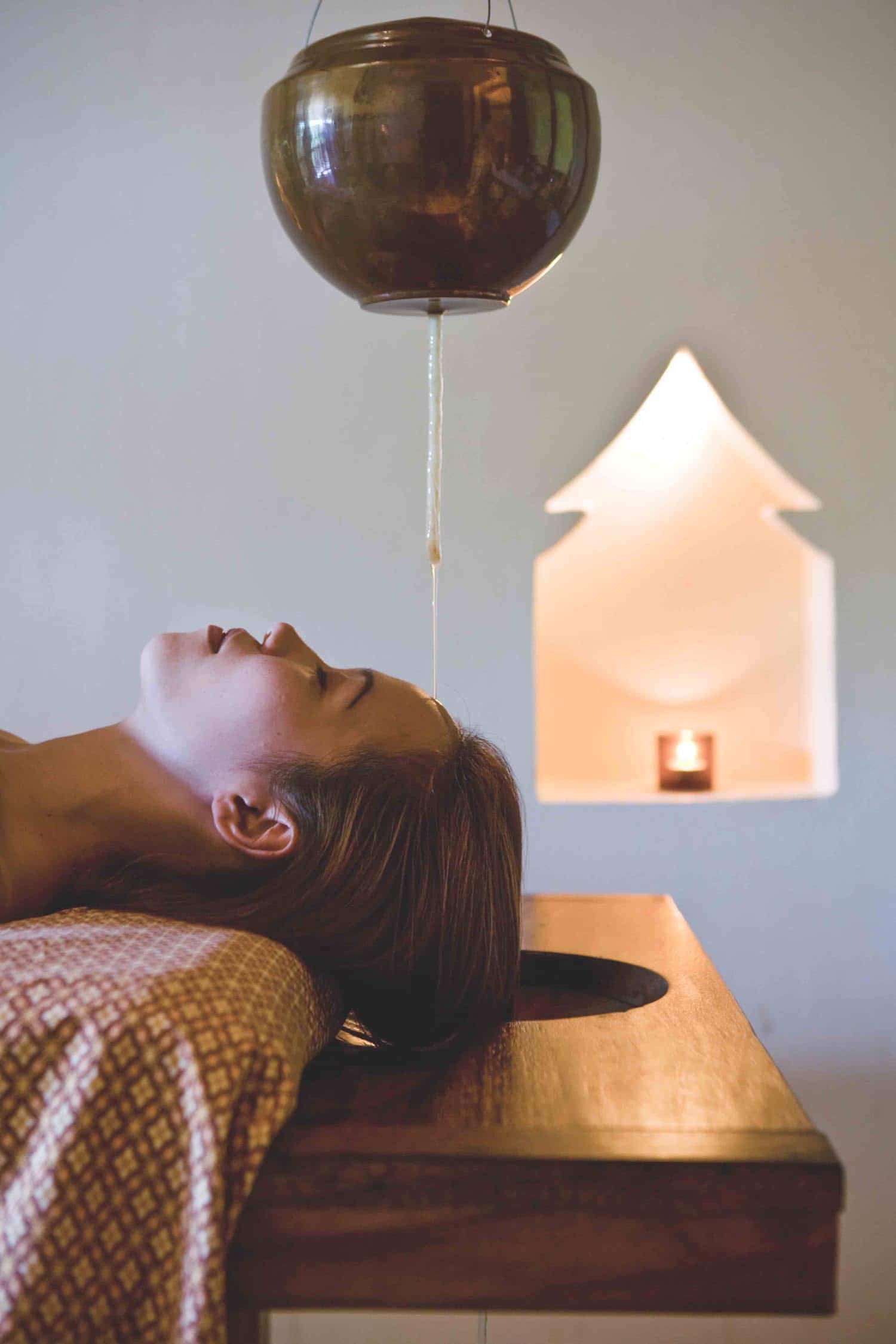The Influence of Water Temperature on the Bathing Meditation Experience

The Impact of Water Temperature on Bathing Meditation Practices
The temperature of water is an integral element that significantly enhances the bathing meditation experience. By influencing both physical comfort levels and mental states, water temperature can be a powerful tool in promoting relaxation and mindfulness during meditation. Exploring this relationship reveals how adjusting water temperature can elevate one’s meditative practices to new heights.
Several factors influence the overall *effect of water temperature* on a person’s meditation experience:
- Physical Comfort: Warm water can act like a gentle embrace that soothes sore muscles and alleviates tension. It encourages relaxation by decreasing blood pressure and promoting a sense of overall well-being. Conversely, cooler water can stimulate the body and invigorate the senses, providing a refreshing jolt that can enhance focus and clarity.
- Mind-Body Connection: The right temperature creates a profound sense of equilibrium between the mind and body. As individuals immerse themselves in water that feels just right, it fosters a deeper connection to their inner selves, encouraging mindfulness and presence. This connection is essential for achieving a meditative state.
- Cultural Practices: Within Nigeria, various ethnic groups have unique bathing customs that reflect local beliefs and rituals. In many Nigerian traditions, the water temperature not only affects the physical experience but is also intertwined with spiritual significance. For instance, in certain regions, a warm bath is believed to purify the spirit and prepare the mind for prayer, while cool water may be used in rituals that refresh and invigorate the body during meditation.
Research indicates that specific water temperatures can yield diverse outcomes during meditation sessions:
- Warm Baths: These are often associated with relaxation and stress relief, helping to lower cortisol levels and create a serene environment conducive to contemplation.
- Cool Baths: Engaging in cooler baths is linked to heightened alertness and improved mental clarity, making it easier to focus on deeper thoughts or intentions during meditation.
- Contrast Temperature: Alternating between hot and cold water is a revitalizing technique believed to invigorate the body and mind. This practice can stimulate blood circulation and enhance overall energy levels, leading to a more dynamic meditative experience.
As you explore the intricate influence of water temperature on your bathing meditation, consider how these multifaceted elements can transform your practice. Experimenting with different temperatures may uncover new dimensions of relaxation, leading you to a more enriching meditative journey. Whether it’s the soothing warmth or the refreshing coolness, water temperature acts as a key ingredient in tailoring personal meditation experiences.
RECOMMENDED: Check out this similar article
Understanding the Benefits of Water Temperature in Bathing Meditation
Water temperature plays a critical role in the overall effectiveness of bathing meditation, as it directly impacts both emotional and physical states. When embarking on a journey of self-discovery through this practice, recognizing the effects of different water temperatures can greatly enhance the meditative experience. Let’s delve deeper into how these variations in temperature can shape not only the environment but also the way practitioners feel and perform during meditation.
Warm Water Benefits
Plunging into warm water can create a cocoon of comfort that envelops the body. This soothing sensation is particularly beneficial for individuals who hold tension in their muscles due to daily stressors. The warmth dilates blood vessels, enhancing circulation and thereby promoting relaxation. Numerous studies suggest that warm baths can lead to lower levels of cortisol, the stress hormone, aiding individuals in reaching a tranquil state more effortlessly during meditation sessions. In many parts of Nigeria, traditional practices involve the use of warm water as part of cleansing rituals, which aligns seamlessly with the purpose of enhancement through meditation.
Cool Water Effects
On the flip side, cooler water can invigorate the senses and awaken the mind. Immersing oneself in cooler temperatures can enhance alertness and improve cognitive functions, making it easier to concentrate on meditative thoughts and intentions. In Nigerian cultures, rituals involving cool water often symbolize renewal and rejuvenation. The brisk sensation can help practitioners feel more alive and present, offering a different yet equally valuable mindset to approach meditation. Research indicates that cooler baths are not just a sharp wake-up call but can set the stage for profound intellectual exploration and mindfulness.
Alternating Water Temperatures
A unique technique gaining attention is the practice of alternating between hot and cold water, commonly referred to as contrast bathing. This method is thought to promote dynamic shifts in energy, stimulating circulation and enhancing overall vitality. By oscillating between the two temperatures, individuals can enjoy the best of both worlds—revitalizing the mind while nurturing the body’s need for rest and recuperation. In several Nigerian wellness traditions, alternating baths are employed not merely for physical benefits but also as a means of spiritual awakening and recommitment to one’s personal journey.
As you engage with the influence of water temperature on your bathing meditation practices, it becomes essential to recognize the specific outcomes each temperature offers. Experimenting with varying temperatures can help uncover new aspects of relaxation and focus, ultimately leading to an enriched experience. Understanding the balance of warmth, coolness, and even contrast allows for a personalized meditation journey tailored to individual needs and preferences.
Water temperature plays a crucial role in the bathing meditation experience, influencing not only the physical sensations of the body but also the mental and emotional state of the practitioner. When exploring how water temperature affects bathing meditation, it becomes evident that different temperatures can evoke varied responses and enhance overall experiences.Warm water, for instance, can create a sense of relaxation and comfort, allowing the mind to drift deeper into a meditative state. This is largely due to the effect of warmth on muscle tension and circulation. The gentle embrace of warm water can serve as a soothing balm on sore muscles, inviting practitioners to let go of physical stress and anxieties. Notably, research has shown that warm water immersion can lead to increased levels of serotonin, a neurotransmitter associated with mood elevation and relaxation. Conversely, cool water can invigorate the senses and increase alertness, making it an excellent choice for those seeking a refreshing meditation experience. Cool baths can stimulate circulation and activate the body’s natural response mechanisms, promoting an enhanced sense of energy and clarity. This invigorating sensation can potentially lead to improved focus during meditation, enabling practitioners to harness their mental faculties more effectively.Both warm and cool water have unique benefits that contribute to a diverse range of meditation practices. The choice of temperature should align with one’s personal meditation goals and emotional requirements. For instance, those seeking tranquility may lean towards warmer baths, while individuals looking for revitalization might prefer cooler temperatures. Ultimately, understanding the influence of water temperature on the bathing meditation experience opens up new possibilities for enhancing one’s practice, allowing individuals to tailor their methodologies to achieve optimal mental and physical well-being. Enhanced awareness around this topic can help practitioners navigate their preferences, ultimately enriching the overall impact of meditation in their lives.
RECOMMENDED: Check out this similar article
Enhancing Mindfulness Through Water Temperature
The role of water temperature extends beyond mere comfort; it serves as a powerful facilitator of mindfulness, enabling deeper introspection during bathing meditation. By actively engaging with the physical sensations that water temperatures evoke, practitioners can learn to anchor their awareness in the present moment, enhancing the overall meditative experience.
The Mind-Body Connection
Engaging in bathing meditation while being mindful of water temperature harmonizes the mind and body, facilitating a greater sense of awareness. For instance, researchers the world over have found that warm water stimulates the vagus nerve, a crucial player in the parasympathetic nervous system, responsible for calming the body and reducing anxiety. This is particularly relevant in Nigeria, where daily stress and emotional turbulence can significantly affect the quality of life. Practitioners who embrace warm baths as part of their routine can foster a deep connection to the serenity within, promoting emotional balance and stability.
Cool Water and Mental Clarity
When it comes to cooler baths, the experience can shift dramatically. The crisp sensation of cold water serves as a catalyst for mental clarity, elevating one’s focus during meditation. This concept is visibly reflected in traditional practices, such as the Yam Festivals in Nigeria, where villagers often conduct ritualistic water blessings to signify purification and clarity of mind. In the same vein, those who immerse themselves in cool water during meditation may channel this sense of clarity to explore thoughts, intentions, and emotions without the heaviness often brought on by warmer temperatures.
Customizing Your Experience
Customizing water temperature according to individual preferences and meditative goals can yield varying outcomes. Some practitioners may find that a finely-tuned format—a warm bath followed by a quick plunge into cool water—may amplify emotional release as well as cognitive engagement. Research highlights that individuals who practice bathing meditation with a tailored approach to water temperature are likely to report higher levels of satisfaction and fulfillment in their meditation practice. It’s important for practitioners to pay attention to how different temperatures resonate with their personal experiences.
The Science of Temperature and Emotion
The science behind temperature regulation and emotion also merits attention. Scientific studies indicate that both warm and cool temperatures can activate distinct neural pathways in the brain linked to emotional responses. For example, the comfort from warm water can evoke feelings of safety and love, while cool water can lead to increased alertness. This phenomenon aligns with Nigeria’s rich cultural heritage, where water is often regarded as a source of healing and sustainable growth. Understanding the emotional aspects linked to water temperature can empower individuals to make intentional choices about their meditation settings.
In the quest to enhance the bathing meditation experience, recognizing and customizing one’s interactions with water temperature not only enriches emotional well-being but also nurtures the principles of mindfulness. As individuals explore how temperature affects their emotional states and meditative depth, they open up new avenues for a profoundly transformative connection with themselves and their environment.
CHECK OUT: Click here to explore more
Conclusion: Embracing the Fluid Dynamics of Meditation
In examining the influence of water temperature on the bathing meditation experience, it becomes evident that this element plays a crucial role in shaping emotional well-being and mental clarity. As we have discussed, the balance between warm and cool water can significantly impact not only our physical comfort but also our mental focus and introspection. Embracing warm water fosters an atmosphere of safety and calm, crucial for easing anxiety in everyday life, particularly in the fast-paced environment often found in Nigeria. Conversely, the invigorating effects of cool water can sharpen awareness and clarity, providing a refreshing perspective that encourages deeper exploration during meditation.
The transformative potential of bathing meditation lies in its adaptability. By customizing water temperature to individual preferences and meditative goals, practitioners in Nigeria can cultivate a unique pathway to mindfulness. The act of engaging with these varying sensations not only heightens awareness but also deepens one’s connection to both self and environment. Moreover, understanding the science behind temperature and emotional response offers individuals the tools to make informed choices about their meditation practices.
Ultimately, the journey towards achieving a profound meditative experience through water temperature invites a continuous exploration of personal sensations and emotional responses. It encourages individuals to tune into their bodies and recognize how different water temperatures can serve as catalysts for healing and growth. As we dive into this rich, dynamic interaction, we uncover new dimensions to the bathing meditation experience—opening doors to greater mindfulness, emotional balance, and personal transformation.


